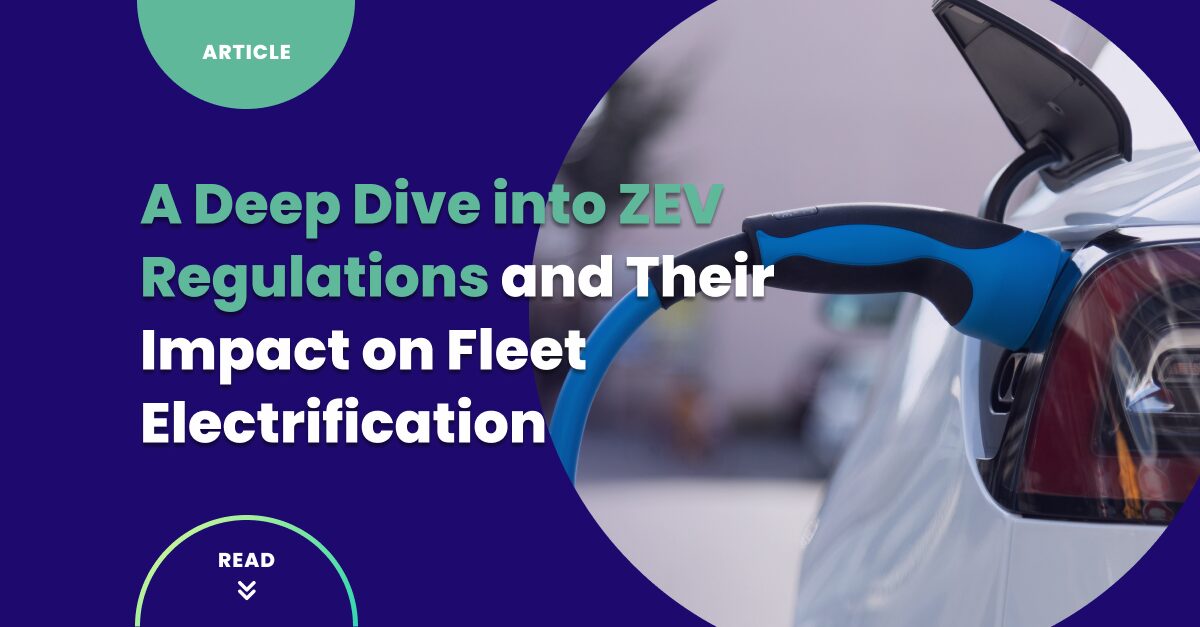A Deep Dive into ZEV Regulations and Their Impact on Fleet Electrification

The global commitment to net-zero targets has turned fleet electrification into a matter of regulatory compliance, not just corporate choice. For fleet managers and sustainability officers, understanding the nuances of Zero Emission Vehicle mandates is the key to strategic planning and operational success.
The Regulatory Hammer and Financial Risk
From London to Los Angeles, governments are setting hard, non-negotiable deadlines for phasing out internal combustion engine (ICE) vehicles.
- The UK’s ZEV Mandate: In the UK, the ZEV mandate sets binding targets for new cars and vans sold by manufacturers, forcing fleets to accelerate their turnover schedules. This regulatory framework makes continuous compliance a core business risk.
- The US State-Level Push (e.g., California’s Advanced Clean Fleets): State regulations like California’s Advanced Clean Fleets (ACF) rule dictate precisely how and when fleets must transition. These rules are detailed, often requiring specific reporting, and if disregarded, can result in significant fines or, in cases of severe, repeated non-compliance, even the suspension of operating authority.
The Problem with Fragmentation: An Insurance Policy is Needed
These mandates introduce complexity, particularly when a fleet operates across multiple jurisdictions with different rules. A fragmented e-mobility ecosystem magnifies the challenge. A multi-country fleet might use different Charge Point Operators (CPOs) in different regions, each with unique software protocols and hardware.
When a CPO leaves a market or sector, their legacy charging assets—whether they are OCPP or non-OCPP compliant—can suddenly become stranded and unsupported. This risk isn’t just operational; it poses a significant compliance threat and erodes the Total Cost of Ownership. The failure of these non-compliant or orphaned chargers can immediately compromise a fleet’s total required capacity, transforming the issue from a technical glitch into a major financial risk. A unified platform acts as an insurance policy against this supply chain and technological obsolescence.
The Strategic Solution: Digital Enablement and Resilience
To navigate this landscape and build resilience against market volatility, a unified, strategic platform is essential. The solution is the Digital Enablement of Services, providing a single, authoritative layer over fragmented hardware.
- Compliance Assurance: A single platform centralizes data from all assets and charging points, regardless of their location or manufacturer. This provides the necessary, court-ready audit trail for regional ZEV compliance, simplifying reporting across diverse jurisdictions and drastically reducing exposure to fines.
- Interoperability and Resilience: By abstracting the hardware and software layer, a unified platform ensures interoperability. It future-proofs the fleet against hardware failure or CPO collapse. If a legacy asset is orphaned, the platform can often be configured to manage it, ensuring the fleet remains operational and compliant, maximizing the lifecycle of existing infrastructure.
- Proactive TCO Management: Centralized data and analytics allow for proactive identification of high-risk operational areas. This helps fleet managers adjust procurement and deployment strategies well ahead of regulatory deadlines, ensuring that the total cost of ownership remains competitive.
Meeting ZEV mandates requires moving beyond tactical vehicle replacement to adopting a strategic, technological framework. This is the only way to ensure resilience, reduce costs, and operate with confidence in a future defined by zero-emission requirements.
